With clients from Mandarin Oriental to Four Seasons and Rosewood, AB Concept is a design studio that inhabits the global first division. Its co-founder Ed Ng speaks to Effect Magazine about the intuition that lies behind great spaces
“It’s the sixth sense of the designer,” says Ed Ng, when asked how he anticipates the desires of guests at his landmark projects. “It’s not something you can put in a formula. Instead, I think it’s the gift of a creative mind.”
It’s an honest answer that seeks to pin down the elusive quality that unites designers at the highest level: it’s a given that they have the business chops and technical savvy; what sets them apart is the intuitive grasp for what a project needs – an ineffable creative insight.
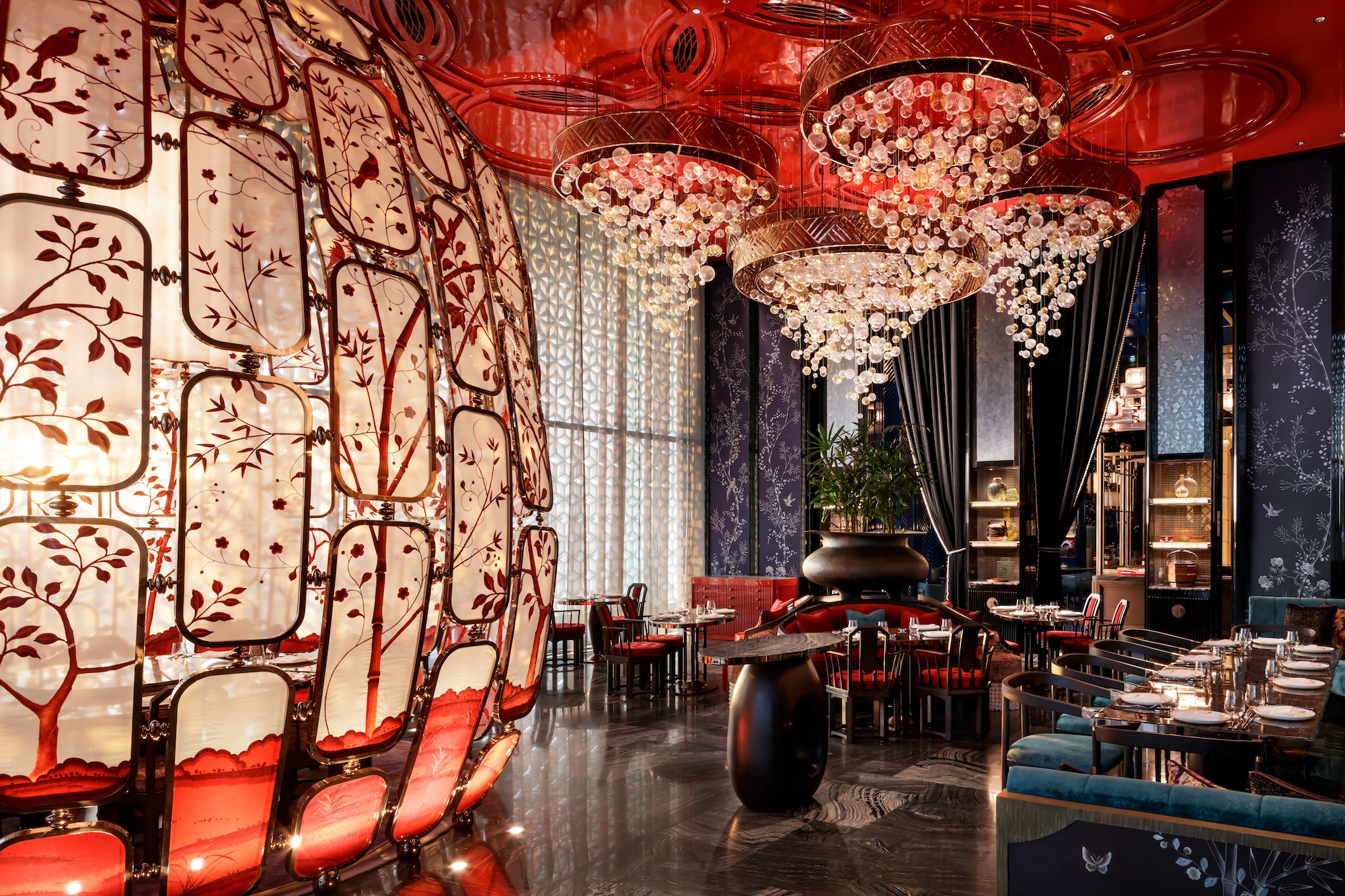

Ed Ng is the co-founder of AB Concept, a studio the designer created in Hong Kong back in 1999 with his architect partner Terence Ngan. In the ensuing decades, the studio has notched up an extraordinary array of clients which include Four Seasons, Waldorf Astoria, Paper Moon, Mandarin Oriental and Rosewood, working across Asia, Europe and the United States. And the spaces they create for these clients are sensational: statement bars, restaurants and receptions of breathtaking escapism and fantasy.
After meeting Ed Ng, it’s easy to understand why these clients are lining up to work with the designer. There’s a relaxed confidence about his manner, and while he is an artist to his core, he’s also clear-eyed about the business practicalities of working on such major projects. And foremost among these is trust: “We have to trust each other,” he says. “We are creating plans that can cost them a fortune, and they need to trust us. And we need to trust them.”
One of Ng’s many stand-out F&B projects is the ARGO at Four Seasons Hong Kong – a glittering jewel of a bar that is everything a venue in the heart of a leading global city should be. Ng explains how the project came about.

“When we were asked to design it, I already knew the hotel inside out – which makes it easier, but at the same time, more difficult because it had so much sentimental value attached.” With the bar being an iconic venue in the absolute heart of the city, these are not just mere words – it’s a place where Ng and his friends would be spending time.
So when designing the space, Ng asked himself: “’What would I do if it were my place? How would I want it to be designed?’ And finally, we came up with the conservatory.”
ARGO’s conservatory theme works so well that it seems pre-ordained, but in fact, it was an answer to what Ng describes as an extremely challenging brief from a design perspective: “It serves breakfast, all the way to a power lunch. And then it closes for just two hours before Happy Hour, all the way to becoming a destination bar.”
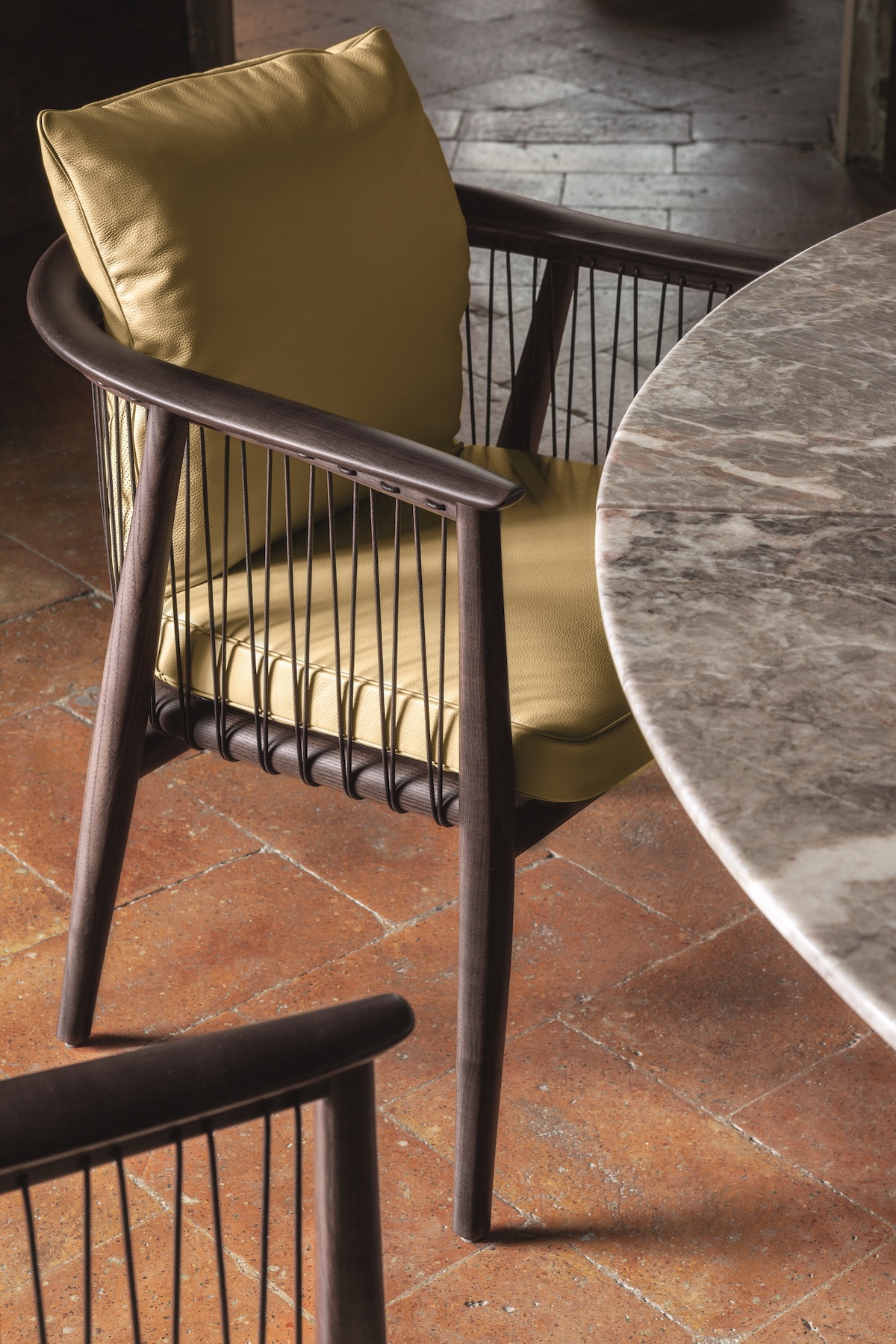
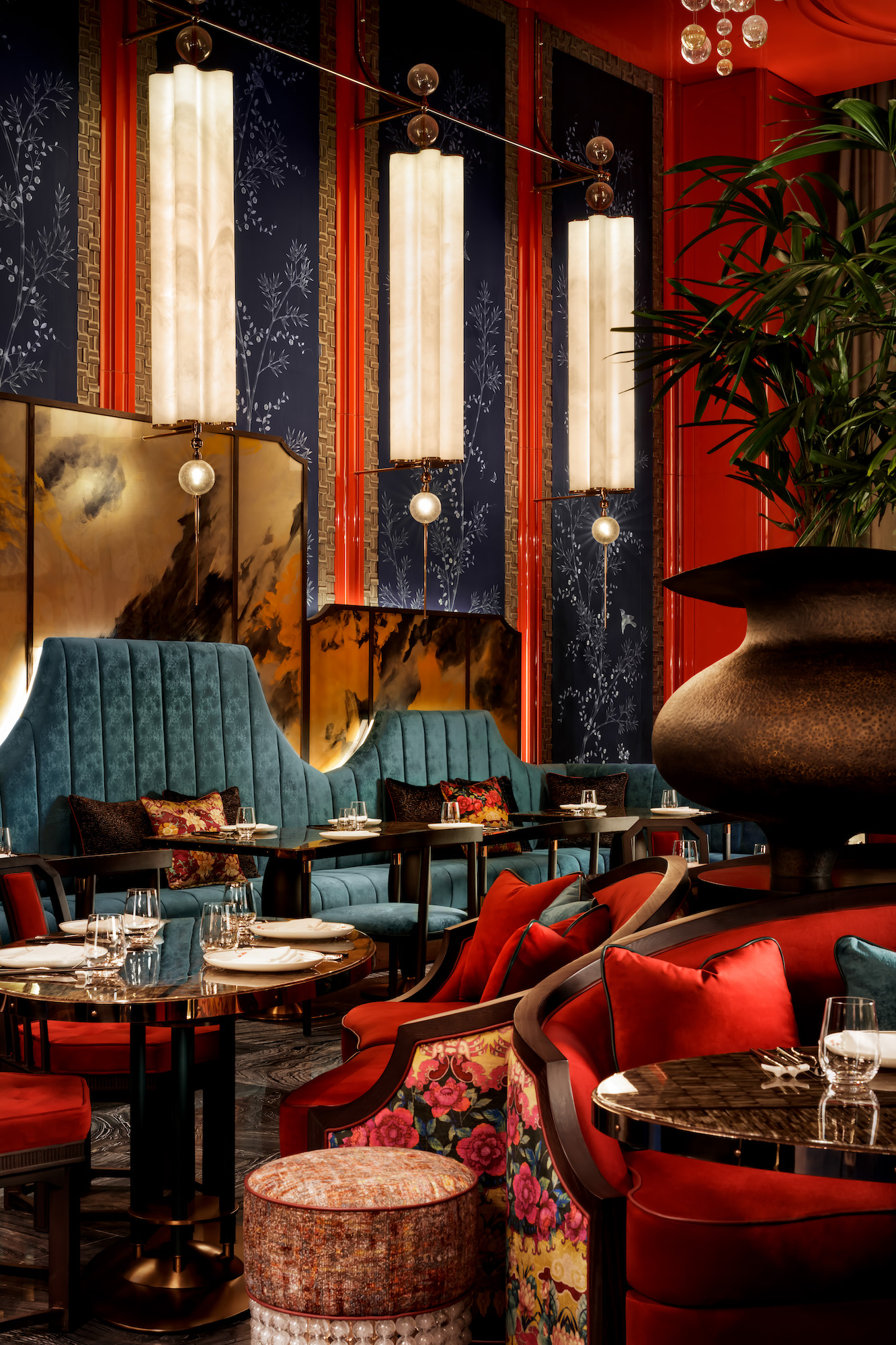
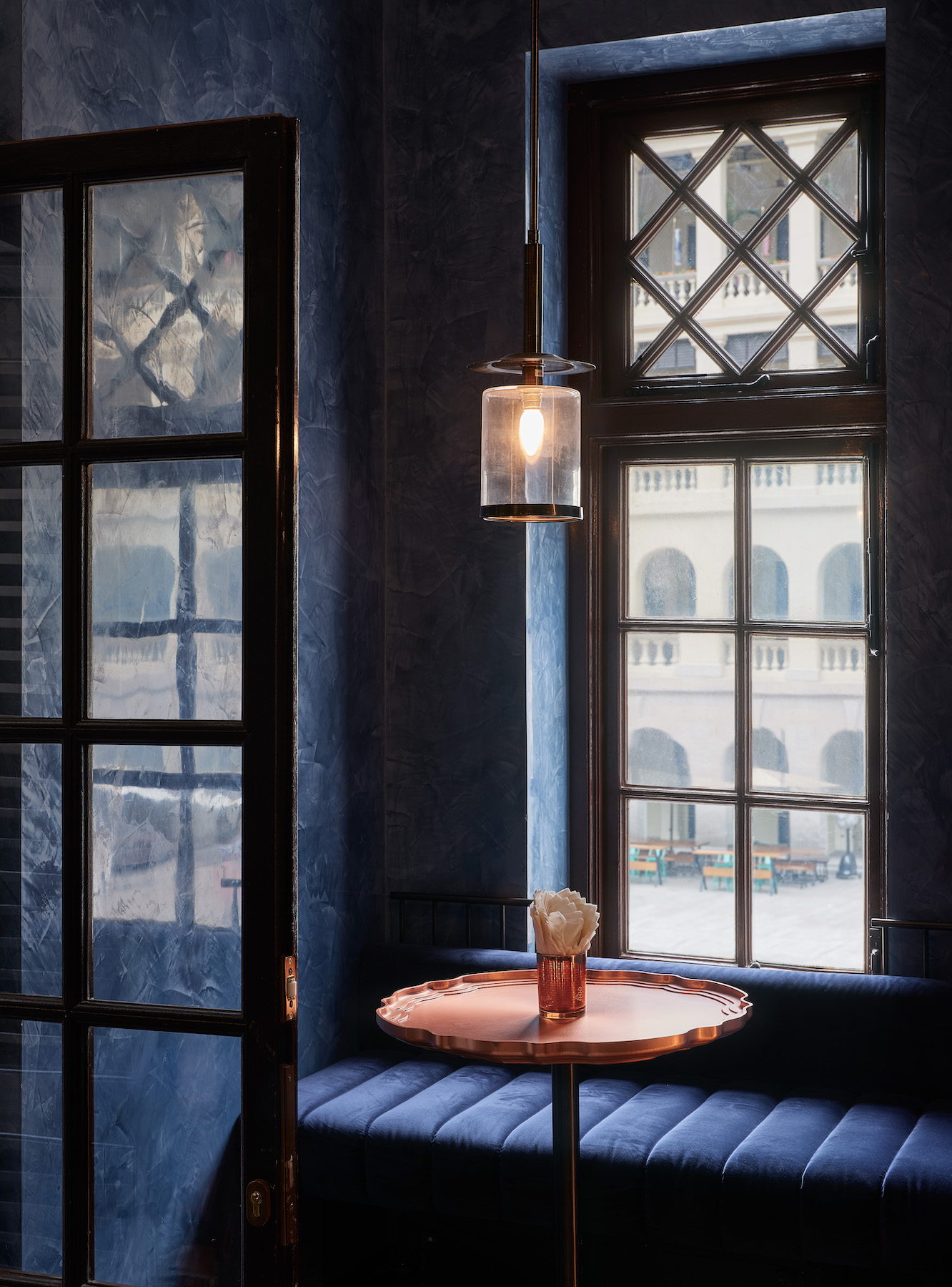
And this presented clear logistical and visual hurdles: “Do you want to see all these vodka bottles while you’re having your morning toast standing next to the bar? And most importantly – if you are a stay-in guest who had breakfast there, what makes it special for you to return in the evening? So you have to make sure the space is very transformable – day and night must be very distinctive.”
The solution – aside from the many technical solutions such as hidden panels and rotating pillars – lay in the colour schemes and choice of materials and fabrics. Not least, the translucent, ethereal aqua colour: “It works well day and night,” explains Ng. “In daytime, it feels refreshing, and at night, with the proper lighting, it can be very sexy.”
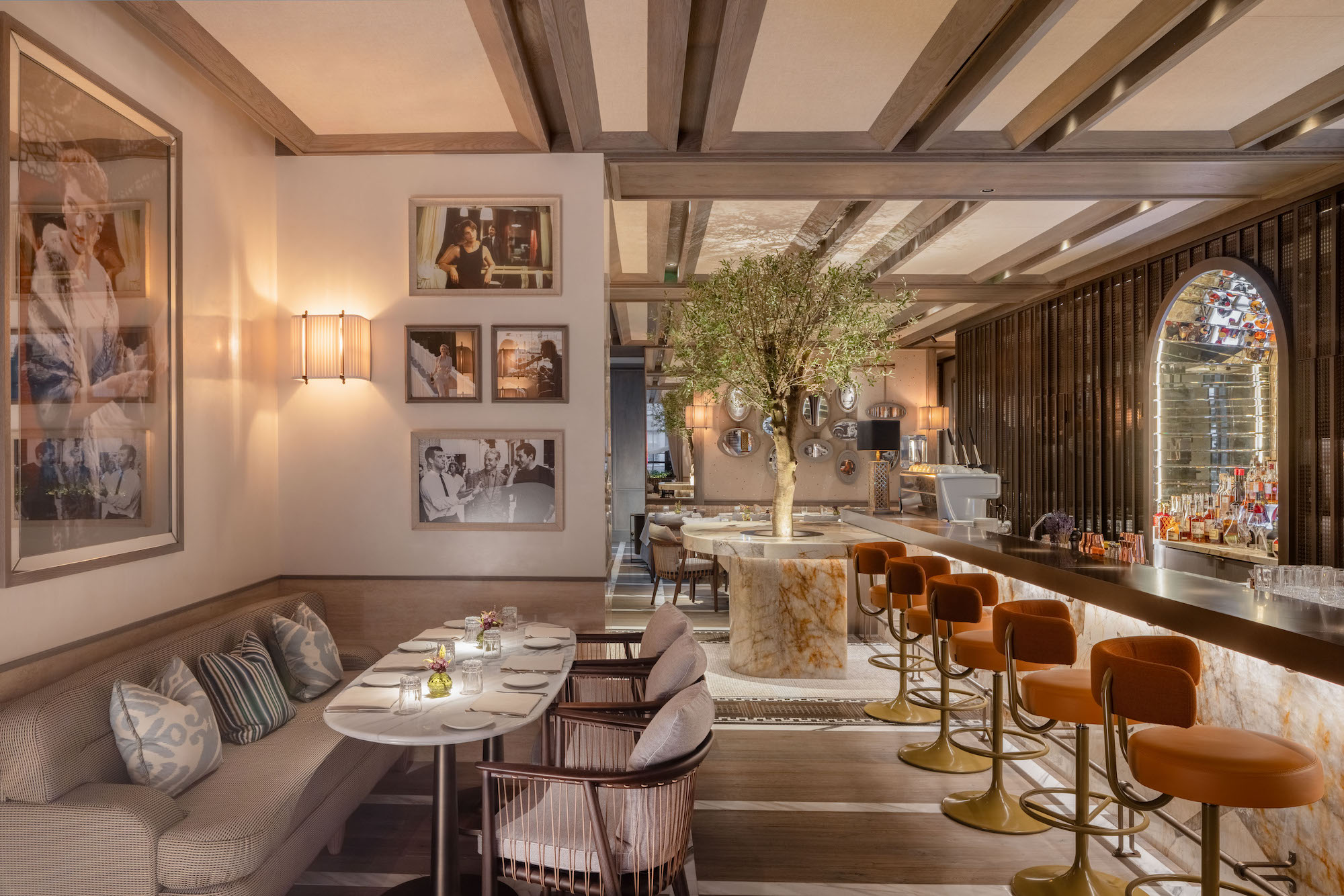
We are speaking while ensconced in another F&B project by AB Concept – Paper Moon at Raffles London in the Old War Office (OWO) – one of the capital’s most important hotel projects in years. And it’s a testament to Ng’s range that the escapist fantasy of ARGO and the elegant Italian glamour of Paper Moon are so different, yet both bear all the hallmarks of AB Concept: faultless layering, extraordinary detailing and a strong sense of place.
The brief for London’s Paper Moon was straightforward: “We were asked to bring the best of the best from Italy into London.” For Ng – a lifelong lover of Modernism and Italian designers such as Gio Ponti – it was the ideal brief, from the Dida to the effortlessly graceful Viola chairs that pepper the restaurant, designed AB Concept for Poltrona Frau.
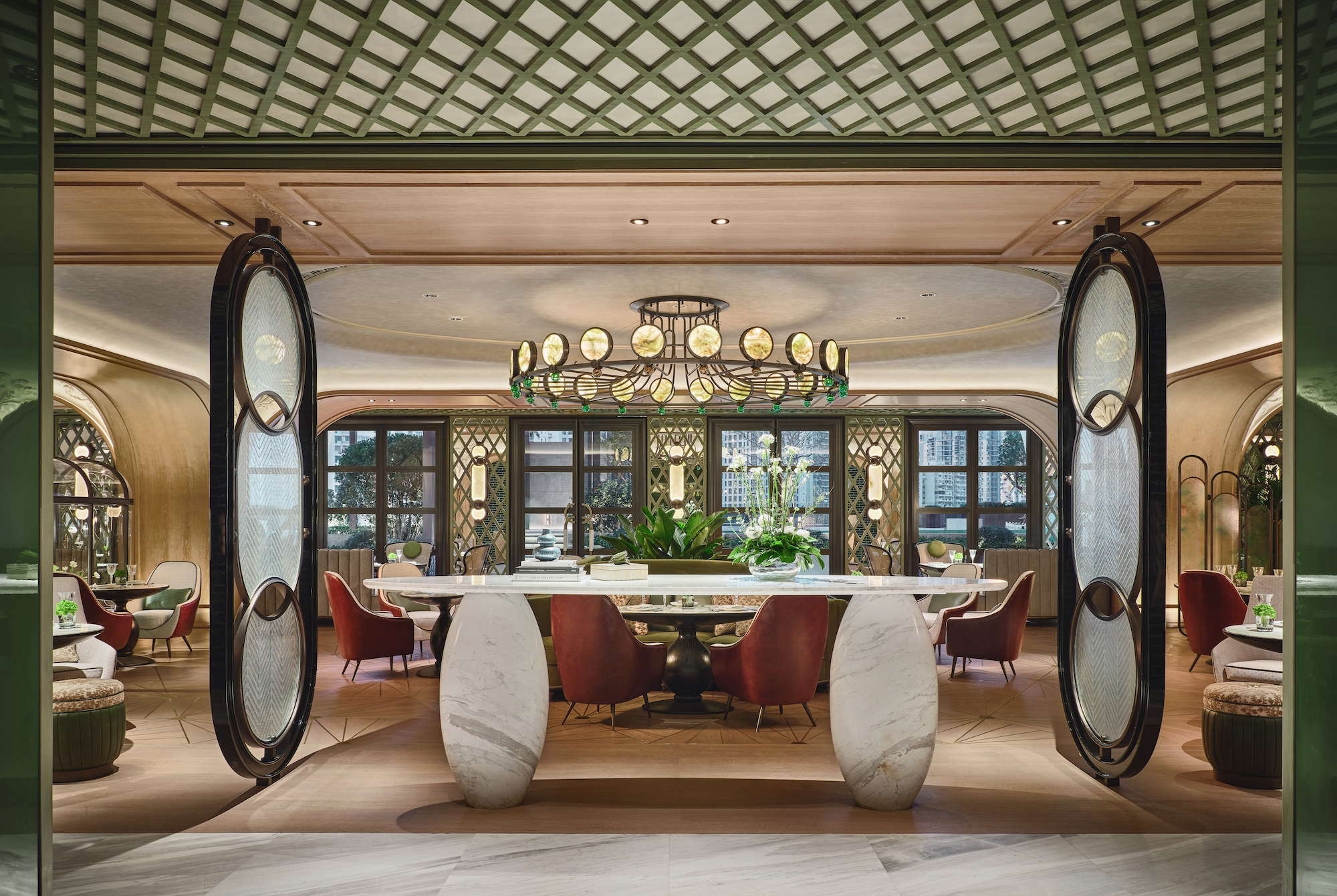
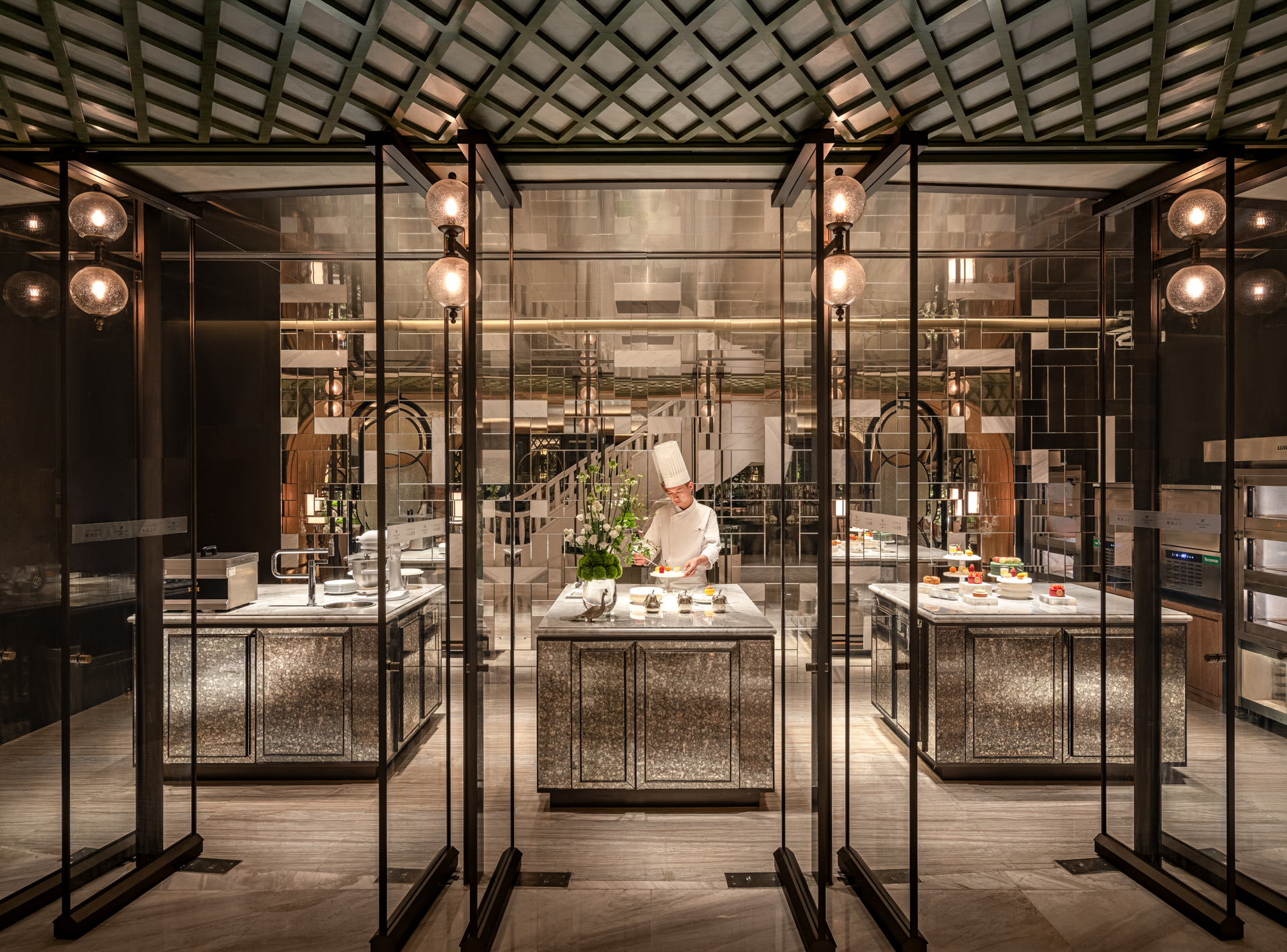
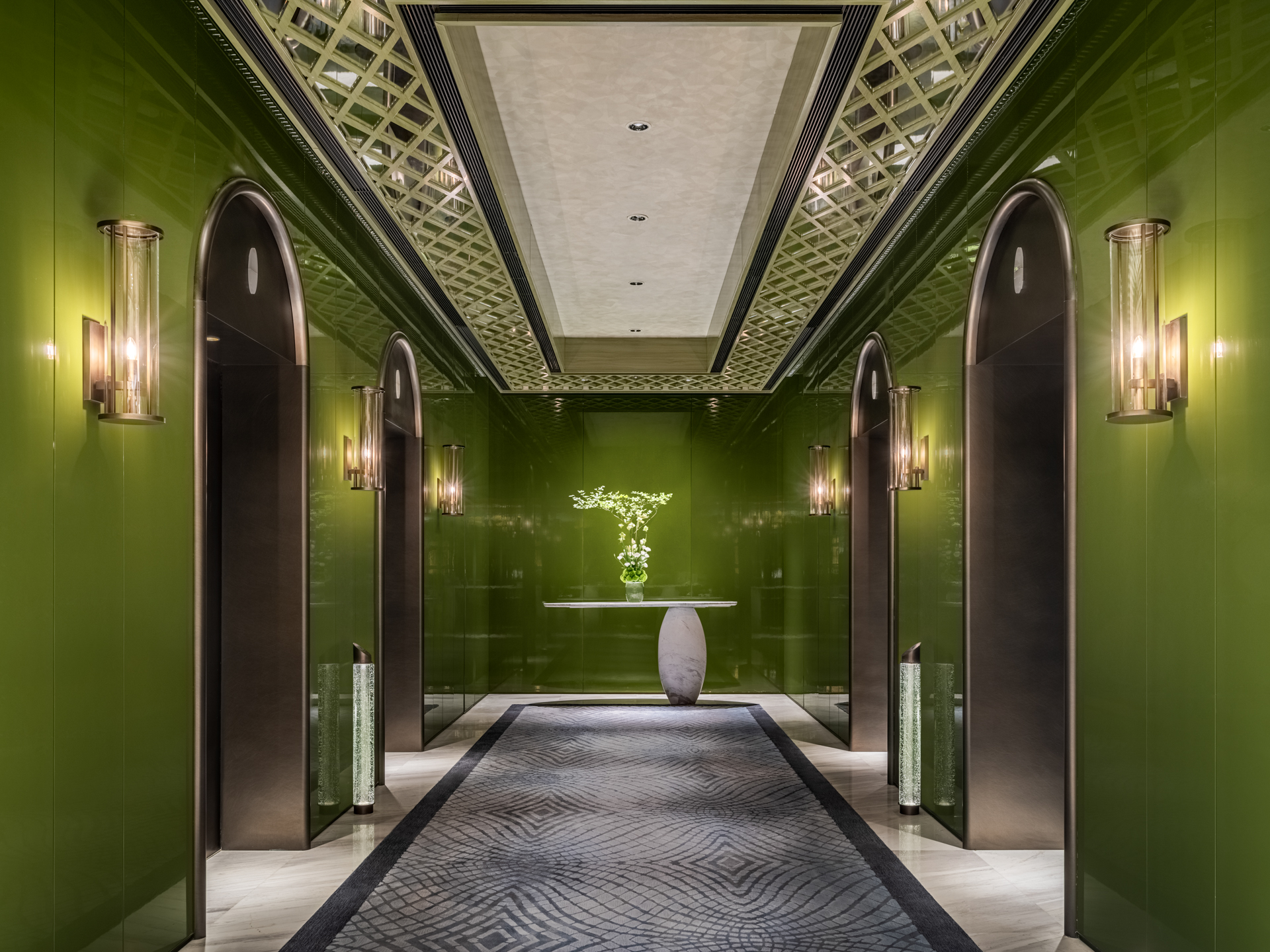
And as with ARGO, Ng’s connection with Paper Moon was personal. “I don’t just know the brand – I know the people. The first time I went to Paper Moon must be 30 years ago, when I first came to Italy for Design Week.”
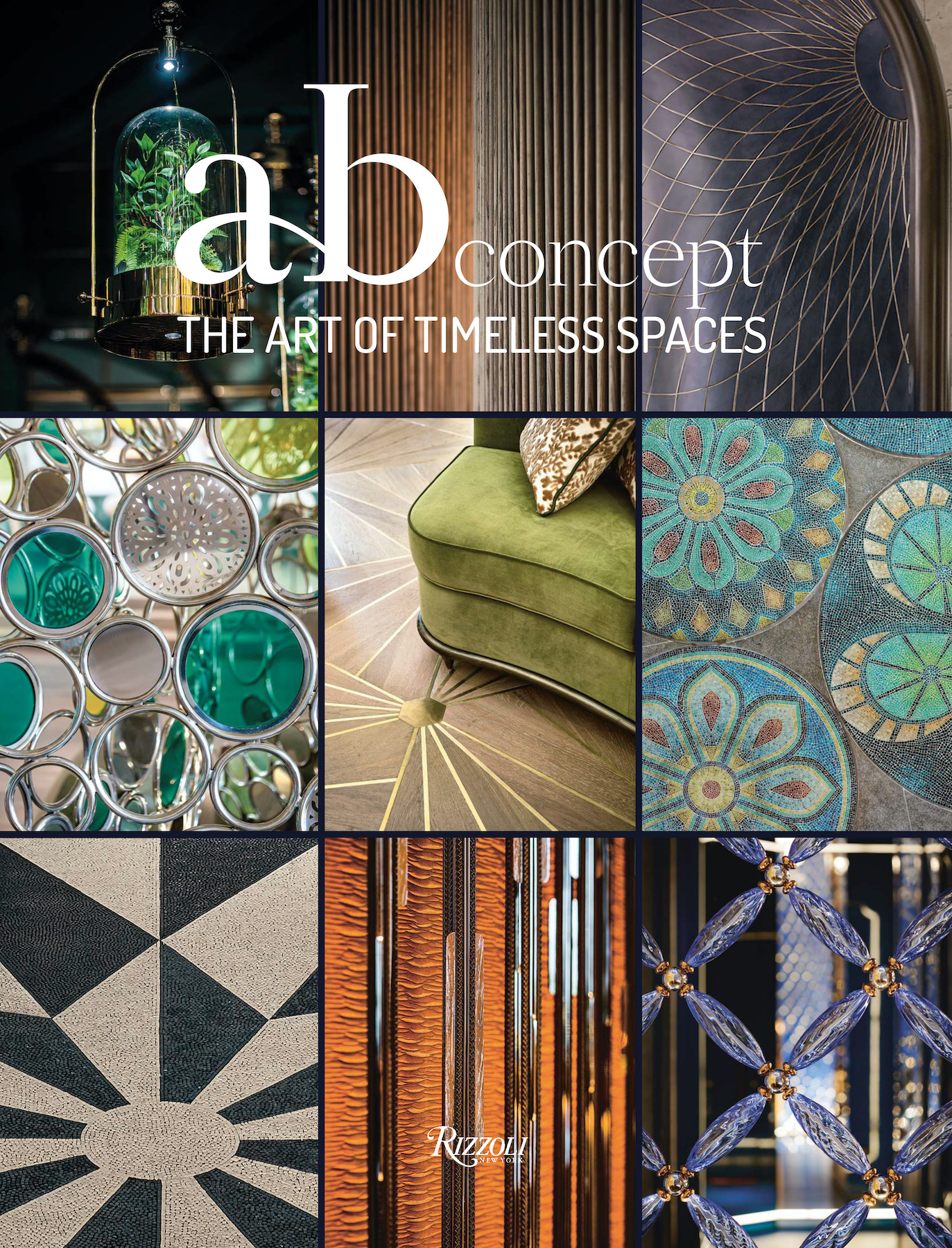
Throughout those years, Ng had seen Enrica Del Rosso (who founded Paper Moon in Milan with her husband Pio Galligani in 1977) mingling with the restaurant’s customers. “It’s a true family business,” he notes. “And although they are now international, they want to keep that warmth. That’s why it’s so important to know the people [behind a project], so you know the soul and how to bring that out into a holistic story.”
Some of the creative processes behind these properties can be found in AB Concept’s new book, The Art of Timeless Spaces – a beautiful monograph published by Rizzoli, where the authors include some of their initial sketches for their projects. One of these is Peacock Alley at Waldorf Astoria in Xiamen, China – an extraordinary space of green lacquered walls, shimmering glass and an Art Deco motif of peacock feathers rendered in ironwork and iridescent screens. It’s a space well suited to the city, as Ng explains: “Xiamen is a well-known destination. It has the nickname ‘Architecture Library’ as it has so many along the little strip of coastline – Russian architecture, German, French, Italian. That gave me the initial inspiration.”
Ng’s life in design has taken him all over the world, and while it’s easy to imagine how this grand scope has influenced him, he makes a point that is a vital lesson for everyone working in the creative sphere: that what counts isn’t just what goes in, but allowing oneself the space and time to process it.
“I’ve been lucky – I’ve had so much opportunity to travel and see the world. But the thing is, if you’re constantly bringing things into your basket, you have no time to let them sink down. We don’t even realise that need to distil what we see. Imagine – every fair, every salone, we take hundreds or even thousands of photos. And you don’t even have time to look at them. You just keep putting your iPhoto memories out of reach.

In Ng’s case, that opportunity for processing has been spending time in his home deep in the forests and mountains of Japan. “The last few years have been a very important moment. You see nothing but the trees from spring to summer to autumn. You have time to pause. In yoga, the last moment of the Shavasana is where you sink down and absorb everything you do. My time in the Japanese Alps is my Shavasana.”
Read more: Books | Designer | Interior Design | Interior Designer | Interiors | Restoration | Asian Design



